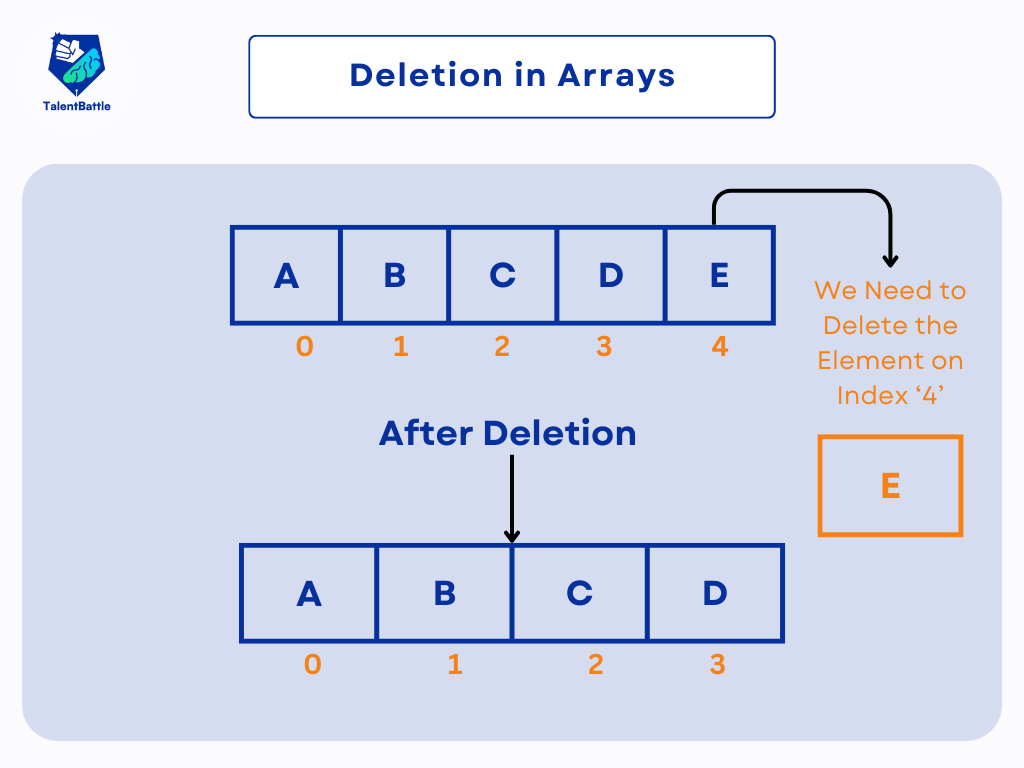Insertion in Arrays
Introduction to Arrays
Searching in Arrays
Traversal in Arrays
Arrays are a crucial data structure used in programming for storing collections of elements. Deletion is one of the fundamental operations performed on arrays, allowing us to remove elements as needed. This guide will cover the process of deleting elements from an array, the challenges associated with it, and practical examples to help you understand the concept better.

Deletion is a crucial operation for various reasons:
The algorithm for deleting an element from an array involves the following steps:
Let's look at a practical example to understand how deletion is implemented in C++.
#include <iostream>
using namespace std;
int main() {
int arr[10] = {10, 20, 30, 40, 50}; // Array with initial elements
int n = 5; // Current number of elements
int pos = 2; // Position of the element to be deleted (0-based index)
// Algorithm for Deletion
// Step 1: Start
// Step 2: Check Position
if (pos < 0 || pos >= n) {
cout << "Invalid position!" << endl;
return 1; // Exit the program
}
// Step 3: Shift Elements
for (int i = pos; i < n - 1; i++) {
arr[i] = arr[i + 1];
}
// Step 4: Update Size
n--;
// Step 5: End - Print the updated array
cout << "Updated array: ";
for (int i = 0; i < n; i++) {
cout << arr[i] << " ";
}
cout << endl;
return 0;
}
pos, shift each element one position to the left.Deletion is a fundamental operation for managing and manipulating data within arrays. By understanding and implementing the deletion algorithm, you can efficiently update and maintain arrays in your programs. This guide provides a comprehensive overview of the deletion process, from basic concepts to practical implementation, ensuring you have the knowledge to handle array operations effectively.
